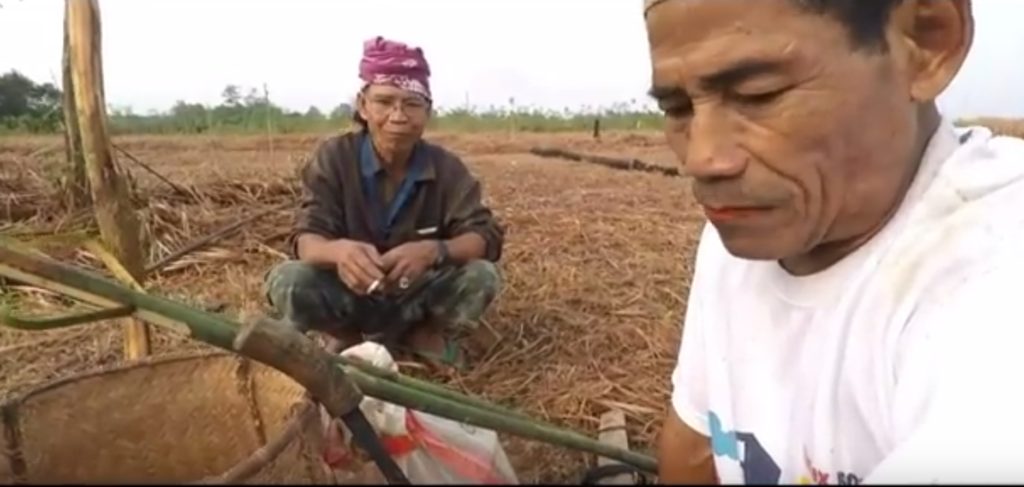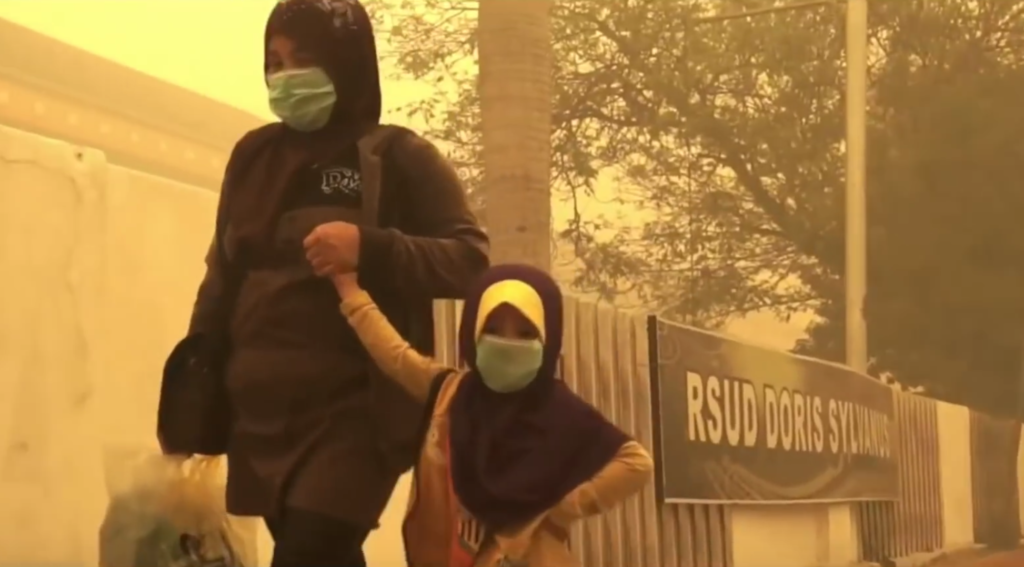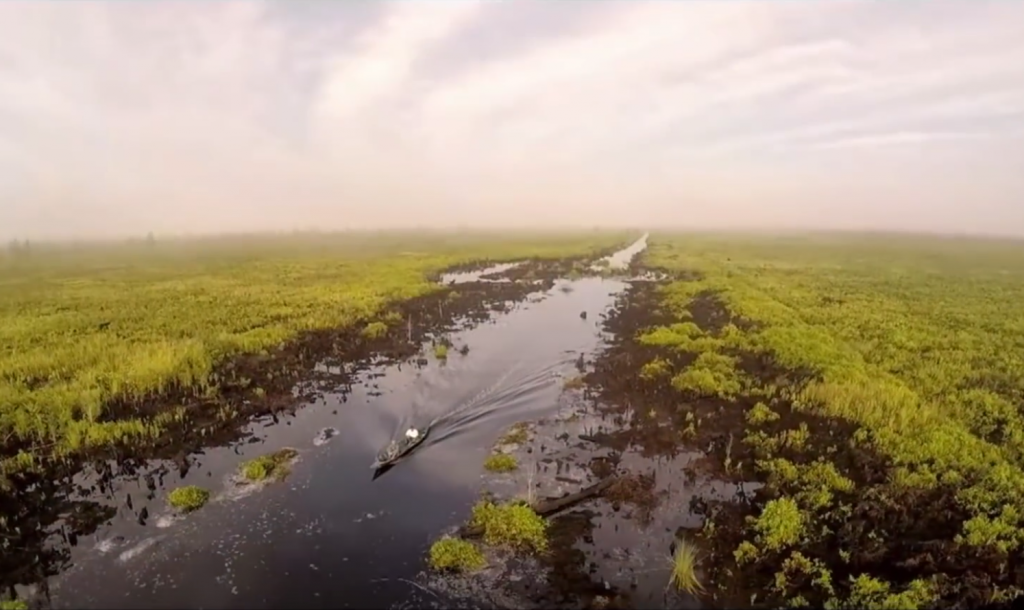Last month President Jokowi announced a moratorium on new oil palm concession licenses. Nestlé decided to break its ties with the Salim group, one of Indonesia’s largest producers. Meanwhile Indonesian oil palm interests are working to counter what they see as a “black campaign” by the European Union against Indonesia’s most important industry. Earlier in the year Dandhy Laksono’s WatchdoC lobbed a cinematic grenade, the documentary Asimetris, into this heated debate.
The film opens with dramatic scenes shot in Central Kalimantan. It’s 2015 and forest fires are burning through a million hectares of forest and peat land. A child is rushed in the hospital struggling to breathe. WatchdoC’s film maker has a headache and is coughing violently.
The film shows how palm oil, a commodity in such global high demand, is transforming environmental, social, political and economic realities across a swathe of Indonesia. This area is now larger than Java Island. The film argues that this has set Indonesia on an unsustainable development trajectory.

STILL FROM ‘ASIMETRIS’
Inoculating Indonesian viewers against a nationalist reaction, the film shows how the top 25 oil palm tycoons, taking finance from international banks, dominate the plantation sector. It suggests that the boom accentuates inequalities and creates new forms of vulnerability for those choking in the fumes or struggling as labourers on the plantations. The film suggests that neither State policies nor the Roundtable on Sustainable Oil Palm have yet addressed these problems.
In later scenes the film makers show people opening ladang the traditional way, farming rice, tapping rubber and cultivating oil palm smallholdings as the landscape around them is transformed in a dramatic fashion. This section, rich in ethnographic detail, provides a cinematic ode to the creativity and perseverance of marginal rural people who face their quotidian struggles with enormous dignity.Yet the film fosters the romance of old and more sustainable forms of farming. This begs a series of difficult questions. Is it possible to go back to old ways? Given the poor price of rubber and the eclipse of extensive swidden systems following decades of land enclosures, do old agricultural systems provide answers to meeting cash needs? What development models can work in these landscapes?

STILL FROM ‘ASIMETRIS’
In Indonesia the film has provoked reaction amongst supporters of the oil palm industry who see the film as too negative. The filmmakers might have added scenes of oil palm smallholders doing well, local elites facilitating the process, or shown alternatives to the large scale plantation model associated with these problems. While the film suggests the need for a radical break with existing models of development, the closing scenes offer little hope. The viewer might be reminded that other development models are possible.
In one scene Jokowi encourages smallholders who now achieve productivity per hectare at just one fifth of what the plantations achieve. Jokowi wants to address the problem of smallholder production. Elsewhere in the world countries have developed smallholder friendly policies. Indonesia also needs representative organisations to affect long-term change and to avoid the pitfalls of policies that do not support the poor.
Despite this, for Indonesian viewers this film opens up a set of critical questions that Indonesia’s policy makers are facing. How to address the environmental problems and conflicts posed by oil palm? How to resolve livelihood and climate insecurity posed by the evolution taking place on the oil palm frontiers? Finally, on what terms does Indonesia want the oil palm boom? How much is enough? And how to overcome the governance problems associated with the boom?
 Facebook
Facebook  Twitter
Twitter  Soundcloud
Soundcloud  Youtube
Youtube  Rss
Rss 